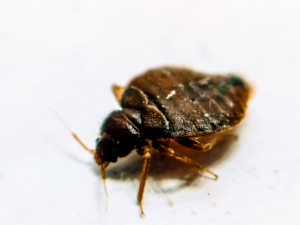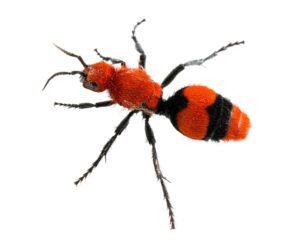Home / Blog / Blister Beetle Bite: Understanding Symptoms and Prevention
Blister Beetle Bite: Understanding Symptoms and Prevention

Scientifically reviewed by Rachel Maldonado
-Published on March 11, 2024
-Updated on August 30, 2024
Blister Beetle Bite: Understanding Symptoms and Prevention
When we think about the great outdoors, more often than not, we think about the thrill of adventure, fresh air, and the joy of new experiences.
But very rarely do we think about the risk of a blister beetle bite.
Technically, blister beetles don’t bite, but do cause reactions due to compounds in their blood that are released when they are crushed. If you’ve even countered one, you probably are already aware of how miserable they can be. And if you’re venturing out into the trails or into your own garden unaware, it’s important to recognize the possibility of coming into contact with these creatures. Though not common, these pests aren’t fun to deal with.
The good news? There are steps you can take to keep yourself safe.
What Does a Blister Beetle Look Like?
At first glance, the blister beetle could easily be mistaken for any other garden-variety insect. These bugs have a sleek, elongated body with a raised head and soft forewings covering the abdomen. Their coloration varies – some are black or gray, while others sport vibrant shades of red or yellow.
Blister beetles are found in almost all parts of the world but are most diverse in desert and semidesert regions. There are more than 7500 species around the world. They are often seen munching on flowers or crops and are particularly drawn to broadleaf plants, including alfalfa and other flowering plants.
At the larval stage, these pests are parasitic, usually laying their eggs in or near the nests of solitary bees. Here, beetle larvae consume the food the solitary bee provisions for its own larvae. Adult blister beetles will cautiously guard an entrance to a bee nest against other trespassing bees.
When Does a Blister Bug Bite?
When it’s threatened or crushed, this beetle emits a toxic substance known as cantharidin. Cantharidin is not only foul-tasting and irritating to the digestive system, but also creates an intense blistering reaction on the skin.
As you might expect, the bite from a blister beetle can cause intense pain at the site. Within minutes or hours, the area around the bite can become red and swollen. It often results in the formation of large, painful blisters filled with clear fluid.
If that wasn’t bad enough, some people may also experience other side effects. Common symptoms include headache, nausea, and lethargy.
Treating Blister Beetle Reactions
Understanding the symptoms of a blister beetle reaction is one thing, but knowing how to respond is another. Here are a few tips on what to do (and what NOT to do) if you’ve suffered a blister beetle encounter:
- Do clean the area with soap and water. You need to prevent infection by gently washing the area.
- Do apply cold packs. This helps reduce swelling and provides temporary relief from pain.
- Don’t pop the blisters. Although it can be tempting, leave them be to reduce the risk of infection. They should heal naturally in due course.
- Don’t apply home remedies without consulting a professional. Some traditional treatments may help or even be harmless, but in some cases, they could exacerbate the condition and lengthen the time to healing.
Preventing Blister Beetle Reactions
As is the case more often than not, prevention is key when it comes to blister beetle reactions.
If you’re working in the garden, always check the plants before you handle them. Take a close look, particularly at the foliage, to make sure nothing’s lurking within.
Even better? Wear gloves. This will give you an additional barrier against these pests.
When you’re out and about, be mindful of where you step and sit. They can easily crawl onto exposed areas of your body and inflict a nasty reaction.
Be thoughtful about weed control and remember that blister beetles are most active when plants are flowering.
If you have pets, be mindful of where they go in the garden or woods. Pets can bring unwelcomed hitchhikers back into the home. While most people assume this is limited to fleas and ticks, blister beetles are also common carry-ons.
The same goes for little kids. If you have children, teach them about blister beetles and remind them not to handle unfamiliar insects.
It’s also important to note that the cantharidin blister beetles release can contaminate hay, causing health problems in horses and other types of livestock.
If you happen to find blister beetles in the garden, consider calling a pest control company. They’ll be able to enact measures that minimize the presence of these pests and get rid of them for good.
Final Thoughts
Encountering a blister beetle – and being bitten – is just one piece of a larger puzzle when it comes to pest control. Though blister beetles certainly have their place in the natural world, there’s a good chance you don’t want them hanging around your home or garden.
Be mindful of the signs, symptoms, and risks of blister beetle bites, and take steps to prevent them. If you’re not sure how to keep these pests at bay, give Hawx Pest Control a call. You’ll join our satisfied family of customers and educate yourself on the journey toward a pest-free future.
Related Articles
Visit our blog to learn more.
→








